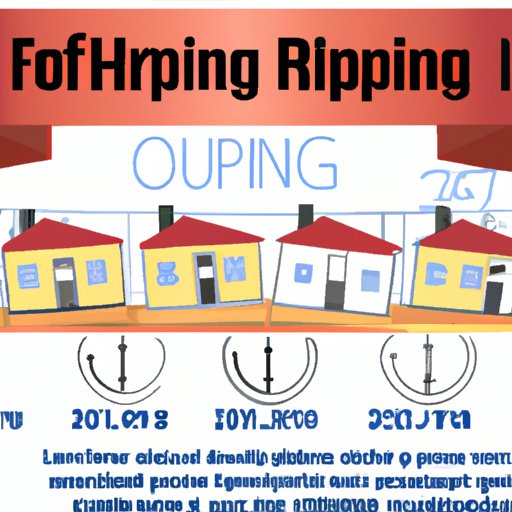Introduction
Flipping houses is a popular investment strategy for those looking to make money in real estate. The concept is simple: purchase a property at a low price, make necessary improvements, and then sell it for a profit. While this may sound easy, there are many steps involved in flipping houses that must be taken into consideration before diving into the process.
Before getting started, it’s important to understand the benefits and challenges associated with flipping houses. On the plus side, flipping houses can generate substantial returns on investment in a relatively short period of time. Additionally, it gives you the opportunity to become an entrepreneur and get creative with design and renovations. However, there are also risks involved with flipping houses, including the potential for financial losses if the project takes longer than expected or if the market doesn’t appreciate the improvements made to the property.
Research the Local Real Estate Market
The first step in getting started flipping houses is to research the local real estate market. This means understanding current market conditions and trends in your area, such as median home prices and average days on market. This will help you identify potential properties to flip and give you an idea of how much you should be willing to pay for them.
You should also look into any special laws or regulations that may apply to flipping houses in your area. For example, some states have regulations that require investors to disclose when a property has been “flipped” in order to protect buyers from being misled about the condition of the property.
Get Pre-Approved for Financing
Once you’ve done your research, the next step is to get pre-approved for financing. This will give you an idea of how much you can spend on a property and make it easier to negotiate with sellers. When applying for a loan, be sure to consider all of the costs associated with flipping houses, including the cost of materials and labor.
It’s also important to factor in any additional expenses that may come up during the course of the project. For example, if you need to hire a contractor to do any work on the property, that could add thousands of dollars to your budget. It’s best to be prepared for these unexpected costs so that you don’t end up overspending on the project.
Identify Potential Properties
Once you’ve been pre-approved for financing, you can begin searching for potential properties to flip. Start by looking for properties that fit within your budget and have good potential for a profitable flip. Look for properties that are in need of repairs or improvements but still have good bones and a solid foundation.
When evaluating potential properties, it’s important to take into account the estimated costs of repairs and improvements as well as the projected sale price. You want to ensure that you’ll be able to make a profit after factoring in all of the costs associated with flipping the property.
Determine the Repairs Needed
Once you’ve identified a potential property, the next step is to determine what repairs and improvements are needed. This will help you create a budget for the project and ensure that you stay within your budget. Take into account the costs of materials, labor, permits, and any other expenses that may come up during the course of the project.
At this stage, it’s also important to consider any changes you may want to make to the property. For example, if you plan to update the kitchen or bathrooms, you’ll need to factor in the cost of new cabinets, countertops, and fixtures. Also, be sure to factor in the cost of hiring any contractors you may need to complete the work.
Develop a Timeline
Once you’ve created a budget and determined the repairs and improvements needed, the next step is to develop a timeline for the project. This will help keep you on track and ensure that the project is completed on time. Create a timeline that outlines each step of the process from start to finish, including finding a property, securing financing, making repairs and improvements, and selling the property.
It’s also important to factor in contingencies for unexpected delays or issues that may arise during the course of the project. This will help you avoid any costly delays that could eat into your profits.
Conclusion
Flipping houses can be a great way to make money in real estate. To get started, it’s important to do your research and understand the local real estate market. Get pre-approved for financing and create a budget to cover all of the costs associated with flipping the property. Identify potential properties and develop a timeline for the project. By following these tips, you can set yourself up for success when flipping houses.
(Note: Is this article not meeting your expectations? Do you have knowledge or insights to share? Unlock new opportunities and expand your reach by joining our authors team. Click Registration to join us and share your expertise with our readers.)
